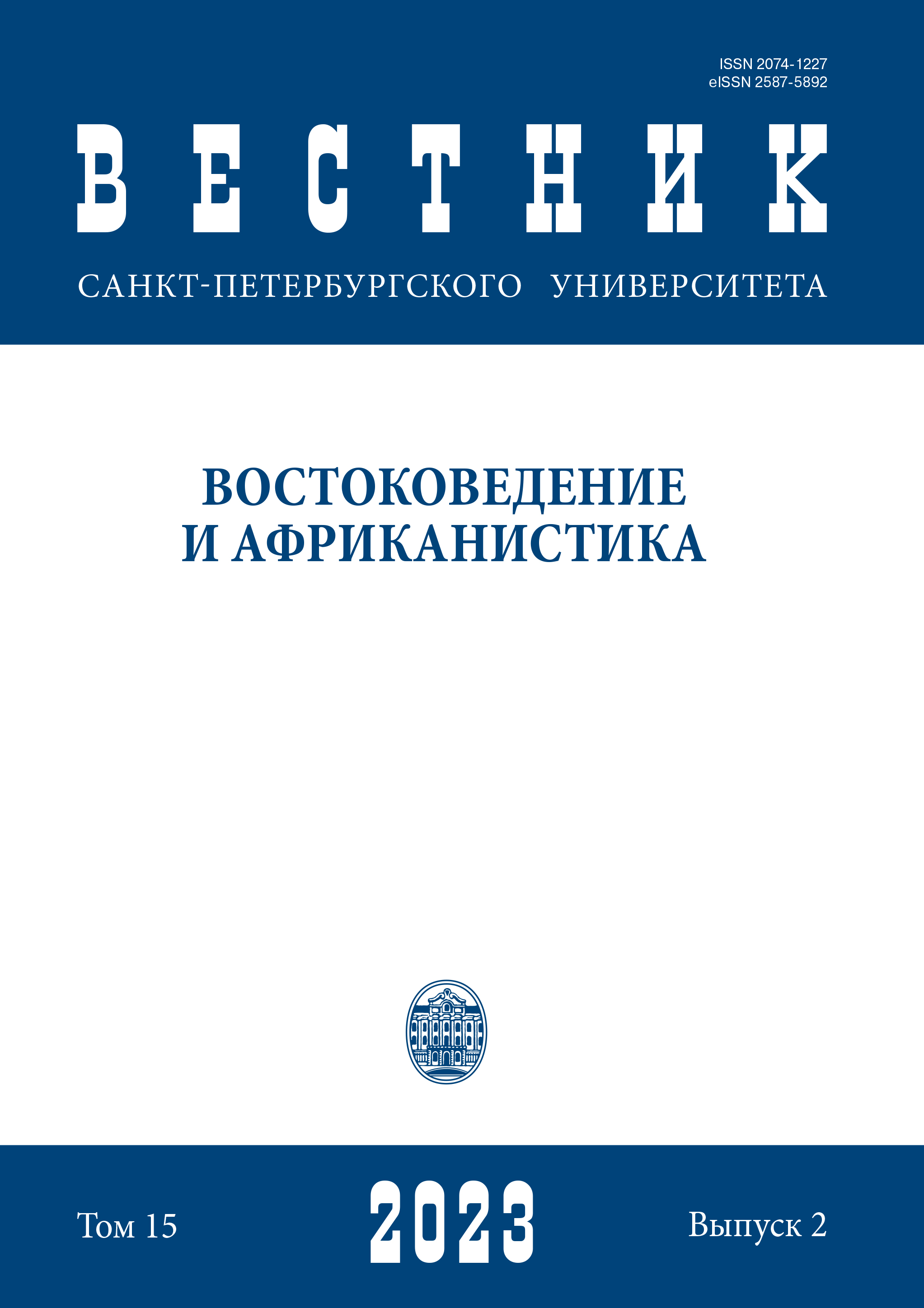Перфект в древнеуйгурском языке
DOI:
https://doi.org/10.21638/spbu13.2023.207Аннотация
В статье обсуждаются вопросы семантической природы тюркского перфекта, границ его семантической зоны и возможных средств выражения перфекта в древнеуйгурском языке. Цель исследования — определить средства выражения перфектных значений в древнеуйгурском языке. Изучаются морфологические средства, которые способны выполнять функцию носителей значений, входящих в семантическую зону перфекта. Перфект и описание его семантической зоны неразрывно связаны с понятиями аспекта, акциональности и способами глагольного действия. В связи с этим подробно рассматривается вопрос о релевантности и применимости данных терминов к древнеуйгурскому перфекту. В настоящем исследовании изучение форм — носителей перфектных значений осуществляется с опорой на точку зрения, согласно которой аспект как грамматическая категория в тюркских языках отсутствует. Диахроническое исследование аспектуальных и временных значений на материале древнеуйгурского языка может послужить ключом к пониманию тюркского перфекта и его реализации в родственных современных языках. Для выявления и описания морфологических средств с перфектным значением используются функционально-семантический и типологический методы. В качестве материала использованы письменные памятники древнеуйгурского языка, датированные примерно X–XI вв., биографического и религиозно-философского содержания. Работа с письменными памятниками, осмысление существующих теоретических подходов к пониманию перфекта как элемента аспектуального функционально-семантического поля показывают, что перфектные значения в древнеуйгурском языке передаются морфологическими средствами, которые можно описать как особые модели. Также установлено, что средства, выражающие значение перфекта в древнеуйгурском языке, могут маркировать временную локализованность и/или аспект.
Ключевые слова:
тюркские языки, древнеуйгурский язык, письменные памятники, аспект, аспектуальность, перфект, аналитические формы, перифрастические формы
Скачивания
Библиографические ссылки
.
Загрузки
Опубликован
Как цитировать
Выпуск
Раздел
Лицензия
Статьи журнала «Вестник Санкт-Петербургского университета. Востоковедение и африканистика» находятся в открытом доступе и распространяются в соответствии с условиями Лицензионного Договора с Санкт-Петербургским государственным университетом, который бесплатно предоставляет авторам неограниченное распространение и самостоятельное архивирование.





